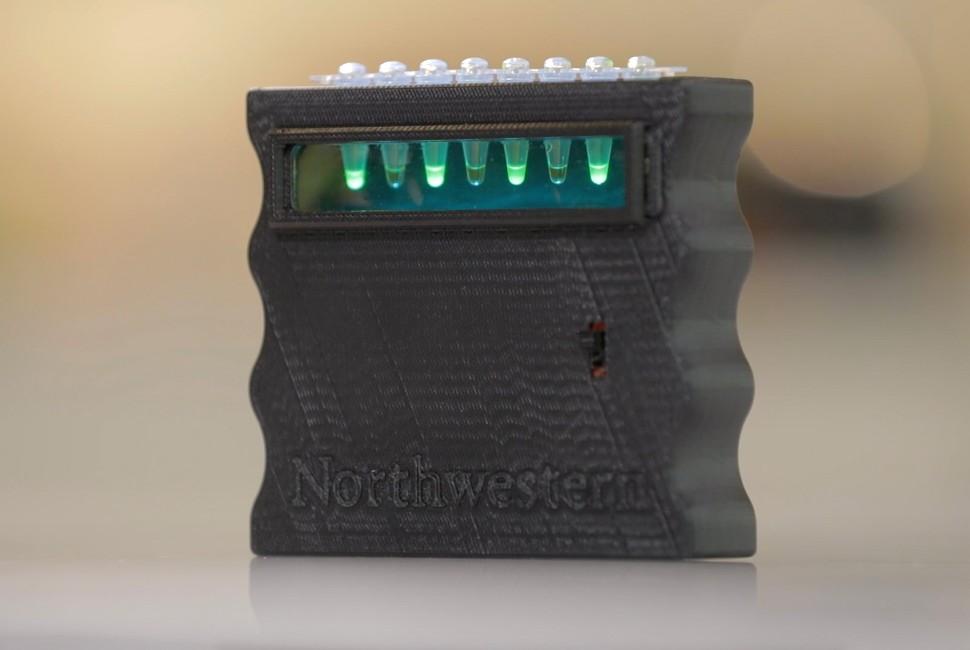An unplugged electric instrument may function, but it sounds much better when it is connected to an amplifier. Similarly, toxins and other small molecules at low concentrations in the environment or human body may emit quiet signals that are undetectable without “amplification” via specialized lab technology.
Thanks to a “cool trick in biochemistry” used to adapt a sensing platform already being deployed by Northwestern scientists to measure toxins in drinking water, researchers can now detect and even measure chemicals at low enough concentrations to have use outside the lab. By attaching circuitry akin to a volume knob to “turn up” weak signals, the team opened the door for the system to be applied to disease detection and monitoring in the human body for nucleic acids like DNA and RNA, as well as bacteria such as E. coli.
The results, published in Nature Chemical Biology, describe a system that is 10 times more sensitive than previous cell-free sensors built by the team.

